Our Speakers
- Sri Rama Koti AINAVARAPU
Professor Sri Rama Koti Ainavarapu is an Associate Professor at TIFR, Mumbai. His research group use a combination of experimental techniques and theoretical tools (Protein engineering, polymer synthesis, fluorescence spectroscopy, state-of-the-aft custom-built single-molecule atomic force microscope (SM-AFM), theoretical methods and steered molecular dynamics (SMD)) to probe the stability and dynamics of proteins and polymers. Using SM-AFM and SMD, they probe the mechanical response of proteins and synthetic polymers. - Sayan BAGCHI
Dr. Sayan Bagchi is Principal Scientist in the physical and material chemistry division of CSIR-NCL, Pune. His works revolve around primarily on vibrational stark effect spectroscopy and 2DIR spectroscopy. Ultrafast molecular dynamics and transient intermolecular structures and interactions happening on subpicosecond and picosecond timescales can be measured in 2D-IR experiments. They use theoretical methods like molecular dynamics (MD) simulations and quantum chemical calculations to obtain a molecular level understanding of the biological/chemical processes. - Vandana BHALLA
Dr. Vandana Bhalla is a Professor in Department of Chemistry at Guru Nanak Dev University, Amritsar. Her area of research lies in development of supramolecular assemblies which serve as nanoreactors for preparation of metal nanoparticles. It also involves development of fluorescent probes and nano- catalysis. - Dhiraj BHATIA
Dr. Dhiraj Bhatia is an Assistant Professor and INYAS-INAS Member in the Department of Biological Engineering at Indian Institute of Technology Gandhinagar.The research group seeks answer to fundamental questions in cell biology using DNA nanotechnology and chemical biology based approaches.They also study the assembly principles of biological systems and the roles which they play in living cells, tissues and full organisms. - Debanjan BHOWMIK
Dr.Debanjan Bhowmik is a scientist C at RGCB Thiruvananthapuram. His research mainly focuses on several important aspects of nanoparticle (NP)-properties—such as, NP-surface curvature, size, aspect ratios, surface charge and ligand density etc. He has designed different nanoconstructs suitable for different type of applications and perform a comparative study of their cellular interactions. To achieve such mechanistic understanding, he aims to test different nanoconstruct designs by visualizing the entire process of NP-cell interaction at single particle level through a semi-continuous and concerted probing. - Debangshu CHAUDHURI
Dr. Debangshu Chaudhuri is an Associate Professor in Department of Chemical Sciences at IISER Kolkata. Research in his group focusses on the self-assembly of molecular chromophores. From trying to understand the role of molecular design and other extrinsic factors in a self-assembly process to designing new materials with interesting properties, there are several directions that they pursue. They are investigating two-dimensional polymorphism in molecular chromophores. - Peng CHEN
Dr. Peng Chen is a Professor of Chemistry at Cornell University, New York. His research focusses onsingle-molecule approaches to investigate and understand themolecular processes of physical, bioinorganic, and biophysical in nature. The objective is to acquire fundamental chemical understanding in order to develop better techniques for energy conversion as well as for curing and preventing diseases. - Chayan DUTTA
Dr. Chayan Dutta is an Assistant Professor in Department of Chemistry at Georgia State University, Atlanta, USA. His research lab uses various spectroscopy, and microscopy methods to investigate the nanoscale physical properties of molecules to address some of the crucial problems of our time in analytical, environmental, and materials chemistry. Their main interests lie in understanding the mass transport dynamics, biomolecule- surface interactions in complex environments, and molecular orientation at interfaces. - Kanchan GARAI
Dr. KanchanGarai is an Assistant Professor in Department of Chemical Sciences at Tata Institute of Fundamental Research, Hyderabad.His research groupaims to unravel the behaviour of proteins and amyloids using biophysical techniques and thereby understanding their role in human diseases.They are also working to develop protein hydrogels and metal nanowires using amyloids as template. - Naomi GINSBERG
Dr. Naomi S. Ginsberg is an Associate Professor of Chemistry and Physics at the University of California, Berkeley. She also works at Lawrence Berkeley National Laboratory as a faculty scientist in the divisions of materials science, molecular biophysics, and integrated imaging.Her research focuses on the in situ imaging and spectroscopy of emerging materials in physical and biophysical chemistry.She developed an innovative approach for spatiotemporally resolved imaging and spectroscopy—as well as their applications for understanding energy transport in hierarchical and heterogeneous materials and in the fabrication and transformation of those materials. - Vishal GOVIND RAO
Dr. Vishal Govind Rao is an Assistant Professor in Department of Chemistry at IIT Kanpur. His groupprobe/manipulate the interface dynamics of charge/energy transfer to improve the catalytic yield. They perform a controlled synthesis of novel high-performance plasmonic nanomaterials and investigate mechanistic details of catalytic reactions on functionalized metallic nanoparticle systems and use a multi-technique approach to correlate time-resolved fluorescence spectroscopy with electrochemistry, atomic force microscopy (AFM), and surface-enhanced Raman spectroscopy. - Akash GULYANI
Dr. Akash Gulyani is an Associate Professor in Department of Biochemistry at School of Life Sciences (University of Hyderabad). His group has developed novel biological sensors and probes for visualizing cellular dynamics such as localized protein activity, signaling, mitochondrial function and cell state transitions. They have intensively developed and explored BOTH natural and engineered light-based biological sensors to uncover new mechanisms and concepts. - Purnananda GUPTASARMA
Dr. Purnananda Guptasarma is a Professor in the Department of Biological Sciences at IISER Mohali. His research work mainly focuses on protein structural biochemistry, and protein engineering. Currently, his group is mainly involved in ex-vivo studies of protein structure, stability, folding and function, or misfolding and aggregation, using many different experimental systems; and studies of DNA-protein interactions or gene expression, or cellular responses to protein aggregates. - Balaji JAYAPRAKASH
Prof Balaji Jayaprakash is an Associate Professor in Centre for Neuroscience (CNS) at Indian Institute of Science, Bangalore. His research focusses on investigating the neural correlates of different forms of learning and memory. They try to understand the relationship between memories of recent and remote life time events and how they interact and influence each other. They use different techniques like optogenetics, CLARITY, Virtual Reality and in-vivo imaging along with several behavioural paradigms in mice to address these questions. - Ajay JHA
Dr. Ajay Jha is an Associate Investigator at Rosalind Franklin Institute, Rutherford Appleton Laboratory, Didcot, UK. He uses the ultrafast spectroscopic methods to unravel mechanistic details of light induced post-translational installation of reactive protein side chains.His research group focus to combine novel technologies in adventurous ways to push atomic resolution, mechanistic understanding and control into cells, tissues, organs and organisms. - Shobhna KAPOOR
Dr. Shobhna Kapoor is an Associate Professor in Chemistry at Indian Institute of Technology, Bombay.Her research group is primarily interested in the field of Molecular Biophysics and Chemical Biology with a particular empasis on lipids and lipid-induced signalling pathways.The usage of high-pressure perturbation methods is performed in order to investigate the structure and function of unusual lipids from bacterial origin. - Sebastian KRUSS
Dr. Sebastian Kruss is a Professor of Physical Chemistry at Ruhr University Bochum and also a Head of Research Group at Fraunhofer IMS.His research group uses microscopy/spectroscopy to investigate nanomaterials and their soft interfaces. They have developed powerful biosensors and imaging tools for the investigation of complex chemical and biological systems. - Nakul MAITY
Dr. Nakul Maity is a Senior Principal Scientist at Division of Structural Biology and Bioinformatics at CSIR-Indian Institute of Chemical Biology and Professor at AcSIRStructural Biology & Bioinformatics. His research area is mainly focussed onstructural intricacies of disease linked intrinsically disordered proteins (IDPs) such as amyloid beta (Aβ), α-synuclein. Application of biological Raman spectroscopy FTIR, NMR, AFM EM and fluorescence spectroscopy and molecular dynamics simulations to understand the aggregation and phase transition of protein solution. - Padmaja Prasad MISHRA
Dr. Padmaja Prasad Mishra is an Associate Professor in Chemical Sciences Division at Saha Institute of Nuclear Physics. His group study interesting biophysical problems involving DNA, RNA and Proteins. To study these systems, they use various techniques such as Förster resonance energy transfer (FRET), Protein Induces Fluorescence Enhancement (PIFE), Fluorescence Correlation Spectroscopy (FCS), Circular Dichroism (CD), Time Correlated Single Photon Counting (TCSPC) and the conventional UV-vis and Fluorescence methods. - Sivaprasad MITRA
Dr. Sivaprasad Mitra is a Professor in Department of Chemistry at North-Eastern Hill University, Shillong. The research area of his group lies in probing ultrafast photo-processes and solvent response towards the formation of the transient species using transient absorption and fluorescence up-conversion techniques. Along with this they also perform ab-initio/DFT calculations, molecular docking and molecular dynamics (MD) simulation to support the experimental results. - Samrat MUKHOPADHYAY
Dr. Samrat Mukhopadhyay is Professor in the Department of Biological and Chemical Sciences at IISER, Mohali. Their lab utilizes a diverse range of approaches involving biophysics, biochemistry, chemical biology, cell and molecular biology, and advanced single-molecule and ultrafast spectroscopy to gain molecular insights into the conformational ensemble and dynamics, the protein hydration water, liquid-liquid phase separation, aggregation and amyloid formation from various IDPs containing low-complexity and prion-like domains. - Andrew MUSSER
Dr. Andrew Musser is an Assistant Professor in the Department of Chemistry and Chemical Biology at Cornell University. They use a versatile toolbox of ultrafast optical spectroscopy techniques to track, understand and manipulate the functional properties of complex organic materials. Their research interest lies in studying light-matter interactions as well as optimizing material processing for high-efficiency light-emitting devices. - Deepak NAIR
Dr. Deepak Nair is an Associate Professor in Centre for Neuroscience at IISc Bangalore. The work in his lab attempt to dissect the fundamental role of dynamic nanoscale organization of synaptic molecules in how synapse process and relay information. To achieve this, they follow an interdisciplinary research paradigm at the interface of high end microscopy, molecular biology and cellular neuroscience. - Prakash P NEELAKANDAN
Prakash P. Neelakandan is a Scientist 'F' at Institute of Nano Science and Technology, Mohali. His research group focuses on using synthetic organic chemistry to prepare new organic functional materials for applications in flexible electronic devices, sensors and cancer therapeutics.Highly sensitive chemosensors have been developed for biologically relevant thiols and fluoride anions.The organic single crystals used for molecular logic operations, flexible optical wave guiding and thermosalience. - Dulal PANDA
Dr. Dulal Panda is Director in National Institute of Pharmaceutical Education and Research (NIPER), Mohali. His research group mainly focuses on Eukaryotic and prokaryotic cell division, microtubule dynamics, mitosis, cancer chemotherapy, FtsZ assembly dynamics, and FtsZ targeted antibacterial drugs and biomolecular spectroscopy. - Nagma PARVEEN
Dr. NagmaParveen is an Assistant Professor in Chemistry at Indian Institute of Technology, Kanpur.Her research group focuses on biological nanoparticles, in particular, Viruses, Virus-like Particles and Lipid Vesicles.The different approaches are employed to functionalize the platforms for capturing of viruses as well as fluorescence microscopy and surface-sensitive analytical techniques for their detection. - Abhijit PATRA
Dr. Abhijit Patra is an Associate Professor in the Department of Chemistry IISER Bhopal. His research interestsinclude the fabrication of porous organic materials (POPs, COFs, organic cages, and macrocycles), nanomaterials (organic/ inorganic/hybrids), and small organic luminogens, their self-assembly and applications in biology, catalysis, water purification, and energy storage. - Ammasi PERIASAMY
Prof. Ammasi Periasamy is the Director and Founder of the WM Keck Center for Cellular Imaging. Currently, Dr. Periasamy works as a Professor of Biology and Biomedical Engineering at the university of Virgina, Charlottesville, USA. A key area of Dr. Periasamy’s research is focused on the design and development of optical methodologies to investigate/monitor exogenous and endogenous molecular interactions. His group has recently developed a FLIRR (Fluorescence Lifetime Redox Ratio) to investigate metabolism and mitochondrial dysfunction in cancer cells, tissues, and animal model in Alzheimer disease (AD). - Pradipta PURKAYASTHA
Dr. Pradipta Purkayastha is a Professor in Department of Chemical Sciences in IISER Kolkata. His research interest lies in Photophysical characterization of new organic and inorganic molecules in microheterogeneous environments. His group is also involved in synthesis and application of metal nanoparticles and nanoclusters in drug delivery as well as Fluorescence Lifetime Imaging (FLIM) and Fluorescence Correlation Spectroscopy (FCS). - Richa RIKHY
Dr. Richa Rikhy is a Professor at Indian Institute of Science Education and Research, Pune. Her research group primarily focuses on the cellular organization, morphogenesis and differentiation during stem cell differentiation and embryogenesis. The various stem cell differentiation models and embryogenesis in Drosophila are employed as systems to address questions of onset of epithelial like plasma membrane and sub-cellular organization. - Palas ROY
Dr. Palas Roy is an assistant professor at IIT Bhubaneswar. His research works focus on Ultrafast Dynamics in Molecules and Materials Time-resolved Emission and Absorption Spectroscopy, Femtosecond Stimulated Raman Spectroscopy, Photodynamics of Next-generation Energy Materials, and Control and Harvest Charge Carriers Efficiently. - Basudev ROY
Basudev Roy is an Associate Professor in the Department of Physics at IIT Madras. His research primary emphasis on Optical Tweezers based study of statistical mechanics and biological systems. They probe the biological systems at the single molecule level by performing high resolution imaging. They couple the single biomolecules like kinesin motors and DNA to birefringent particles and apply controlled torques to study intrinsic properties of these molecules. - Sanford RUHMAN
Prof. Sanford Rahman is an Emeriti Professor in the Institute of Chemistry at The Hebrew University of Jerusalem. His research deals with applications of ultrafast spectroscopy to condensed phase photochemistry and photobiology. They construct State of the art femtosecond lasers to develop spectroscopic methods for following chemical dynamics in real time. They investigate small model systems to study photo-reactive systems of intrinsic functional importance, such as photosynthetic proteins or, more recently exciton dynamics in semiconductor nano-crystals and novel photovoltaic materials. - Sameer SAPRA
Sameer Sapra is a Professor in Department of Chemistry at Indian Institute of Technology Delhi. His research focuses on the synthesis and applications of nanocrystals: in particular semiconductor nanocrystals or quantum dots. The interest in nanocrystals stems from the fact that these tiny fragments of matter exhibit properties dependent on the size of the crystals. They concentrate mainly on the group II-VI chalcogenides, namely that of cadmium and zinc for the visible region of the electromagnetic spectrum, group IV-VI semiconductors such as PbS and PbSe for the infra-red region. - Ishu SARAOGI
Dr. Ishu Saraogi is an Associate Professor of Assistant Professor in Department of Biological Science at Indian Institute of Science Education and Research, Bhopal, India.Her research group is interested in the development of novel antibacterial compounds to combat drug-resistant bacteria. Using a combination of organic chemistry and molecular biology techniques, they focus mainly on Biophysical and biochemical assays for studying protein-protein and protein-ligand binding with a strong emphasis on fluorescence. - Dibyendu K SASMAL
Dr. Dibyendu K. Sasmal is an Associate Professor in Department of Chemistry at IIT Jodhpur. His research interest mainly lies in understanding complex sub-cellular functions and dynamics at single molecular level in real-time. They are specifically trying to understand how immune cells distinguish between self and foreign antigens at single molecule level in real time. For this, they apply various imaging techniques to capture ligand-receptor interaction dynamics on cell surface. - Michael SCHLIERF
Michael Schlierf is an Associate Professor for Molecular Biophysics at B CUBE, TU Dresden. His research mainly focuses on Conformational changes in biomolecules and enzymes.In order to study conformational changes within and between biomolecules, they develop and apply modern instruments and techniques based on fluorescence and force spectroscopy to understand how these nano-bio-machines change their structure during a given biological process. They are able to observe and analyse one molecule at a time to build a highly time and space-resolved picture of their dynamic interaction. - Bidisha SINHA
Dr. Bidisha Sinha is an Associate Professor in theDepartment of Biological Sciences at IISER Kolkata. Her research group focuses on how membrane homeostasis is established in single adherent eukaryotic cells.The high-resolution imaging of cells along with substrate micro-patterning and controlled stretching is used for investigation. - Sharmistha SINHA
Prof. Sharmistha Sinha is a Professor, Scientist-F, Dean Academics, Former Head CBU at Institute of Nano Science and Technology, Mohali. Her lab is actively engaged in understanding the biogenesis pathogenesis in the bacterial microcompartments (BMCs) associated with Salmonella enterica. BMCs are models to explore compartmentalization in biology and organelle biogenesis in Salmonella BMCs as targets to manage Salmonella BMCs as scaffolds for the development of smart nano-factories and nanomaterials. - Sanjeevi SIVASANKAR
Dr. Sanjeevi Sivasankar is a Professor in the Department of Biomedical Engineering at the University of California, Davis. The research in his group focuses on understanding how cells tune their adhesion and how this process goes awry in cancer. The development of bioengineering tools and biophysical investigations of mechanical tension sensing in cells are two main areas of study. He aims to resolve the physical principles by which cells sense and respond to mechanical stimuli. - Trevor SMITH
Prof. Trevor Smith is a spectroscopist in the School of Chemistry at the University of Melbourne, Australia as well as a leader of the Ultrafast and Micro spectroscopy Laboratories.His primary interests are the development of super-resolution optical imaging methods and the use of ultrafast laser spectroscopy and time-resolved microscopy to study fast chemical processes, including energy transfer, electron transfer and excitons in polymers, nanocrystals and other materials. - Peter TOROK
Dr. Peter Torok is a professor having joint appointments with the Division of Physics and Applied Physics, School of Physical and Mathematical Sciences, Lee Kong Chian School of Medicine and the Singapore Centre for Environmental Life Sciences Engineering (SCLESE), where he is Director of Imaging.Peter has a rich experience in developing sophisticated optical systems. His research interests cover the entire range of conventional optics, including optical design, electromagnetic imaging theory, polarisation, confocal microscopy, compressive/single pixel imaging, Brillouin and Raman spectroscopy and microscopy, reconfigurable optics and various applications in metrology. - Sugumar VENKATARAMANI
Dr. Sugumar Venkataramani is an Associate Professor in Department of Chemical Sciences at IISER Mohali. His research group utilize the concepts of physical organic and synthetic organic chemistry towards design, development and studies on reactive species, and photoswitchable (functional) molecules and materials. They try to understand about the structure, stability and reactivity of radicals and highly reactive species. A detailed infrared/UV spectroscopic investigation will be performed along with computational studies in order to understand the structural information and mechanistic pathways. - Thorsten WOHLAND
Dr. Thorsten Wohland is a Professor in Department of Biological Sciences at National University of Singapore, Singapore.His research group focuses on biophysics, specifically biophysical fluorescence. Currently, their interest is either on the investigation of transmembrane proteins (G-protein coupled receptors, growth factors) as well as their structure, function, and interactions, or antimicrobial peptides and their interaction with bacterial membranes.
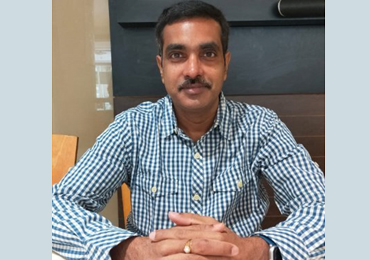
Sri Rama Koti AINAVARAPU
Professor Sri Rama Koti Ainavarapu is an Associate Professor at TIFR, Mumbai. His research group use a combination of experimental techniques and theoretical tools (Protein engineering, polymer synthesis, fluorescence spectroscopy, state-of-the-aft custom-built single-molecule atomic force microscope (SM-AFM), theoretical methods and steered molecular dynamics (SMD)) to probe the stability and dynamics of proteins and polymers. Using SM-AFM and SMD, they probe the mechanical response of proteins and synthetic polymers.
View Profile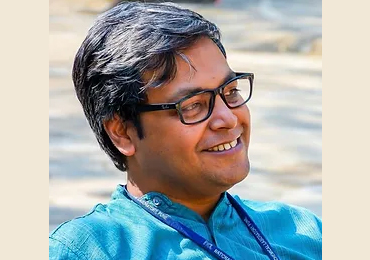
Sayan BAGCHI
Dr. Sayan Bagchi is Principal Scientist in the physical and material chemistry division of CSIR-NCL, Pune. His works revolve around primarily on vibrational stark effect spectroscopy and 2DIR spectroscopy. Ultrafast molecular dynamics and transient intermolecular structures and interactions happening on subpicosecond and picosecond timescales can be measured in 2D-IR experiments. They use theoretical methods like molecular dynamics (MD) simulations and quantum chemical calculations to obtain a molecular level understanding of the biological/chemical processes.
View Profile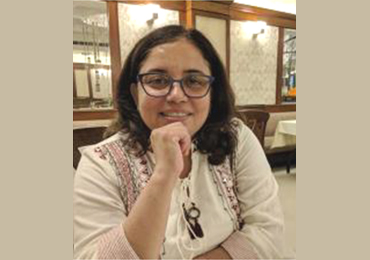
Vandana BHALLA
Dr. Vandana Bhalla is a Professor in Department of Chemistry at Guru Nanak Dev University, Amritsar. Her area of research lies in development of supramolecular assemblies which serve as nanoreactors for preparation of metal nanoparticles. It also involves development of fluorescent probes and nano- catalysis.
View Profile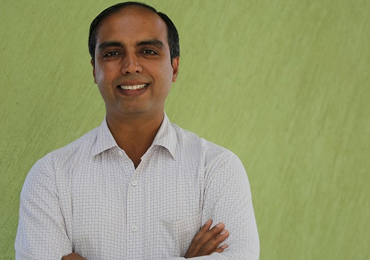
Dhiraj BHATIA
Dr. Dhiraj Bhatia is an Assistant Professor and INYAS-INAS Member in the Department of Biological Engineering at Indian Institute of Technology Gandhinagar.The research group seeks answer to fundamental questions in cell biology using DNA nanotechnology and chemical biology based approaches.They also study the assembly principles of biological systems and the roles which they play in living cells, tissues and full organisms.
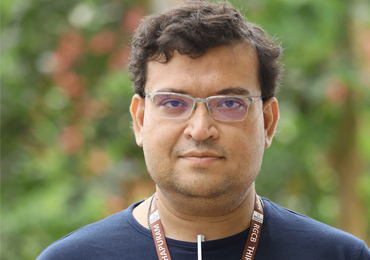
Debanjan BHOWMIK
Dr.Debanjan Bhowmik is a scientist C at RGCB Thiruvananthapuram. His research mainly focuses on several important aspects of nanoparticle (NP)-properties—such as, NP-surface curvature, size, aspect ratios, surface charge and ligand density etc. He has designed different nanoconstructs suitable for different type of applications and perform a comparative study of their cellular interactions. To achieve such mechanistic understanding, he aims to test different nanoconstruct designs by visualizing the entire process of NP-cell interaction at single particle level through a semi-continuous and concerted probing.
View Profile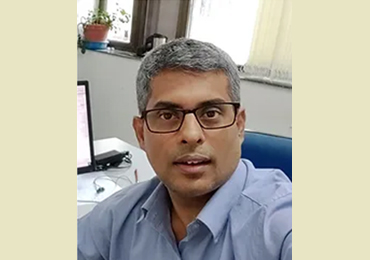
Debangshu CHAUDHURI
Dr. Debangshu Chaudhuri is an Associate Professor in Department of Chemical Sciences at IISER Kolkata. Research in his group focusses on the self-assembly of molecular chromophores. From trying to understand the role of molecular design and other extrinsic factors in a self-assembly process to designing new materials with interesting properties, there are several directions that they pursue. They are investigating two-dimensional polymorphism in molecular chromophores.
View Profile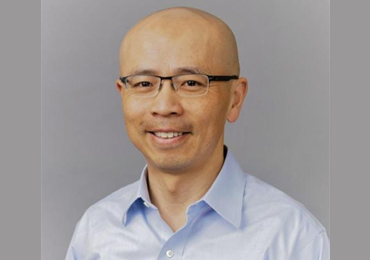
Peng CHEN
Dr. Peng Chen is a Professor of Chemistry at Cornell University, New York. His research focusses onsingle-molecule approaches to investigate and understand themolecular processes of physical, bioinorganic, and biophysical in nature. The objective is to acquire fundamental chemical understanding in order to develop better techniques for energy conversion as well as for curing and preventing diseases.
View Profile
Chayan DUTTA
Dr. Chayan Dutta is an Assistant Professor in Department of Chemistry at Georgia State University, Atlanta, USA. His research lab uses various spectroscopy, and microscopy methods to investigate the nanoscale physical properties of molecules to address some of the crucial problems of our time in analytical, environmental, and materials chemistry. Their main interests lie in understanding the mass transport dynamics, biomolecule- surface interactions in complex environments, and molecular orientation at interfaces.
View Profile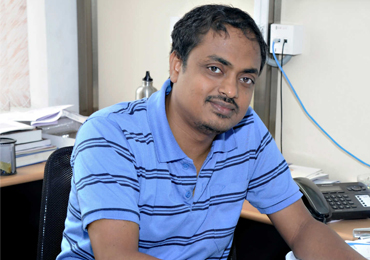
Kanchan GARAI
Dr. KanchanGarai is an Assistant Professor in Department of Chemical Sciences at Tata Institute of Fundamental Research, Hyderabad.His research groupaims to unravel the behaviour of proteins and amyloids using biophysical techniques and thereby understanding their role in human diseases.They are also working to develop protein hydrogels and metal nanowires using amyloids as template.
View Profile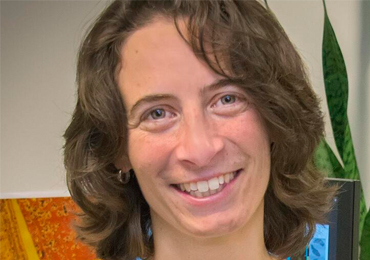
Naomi GINSBERG
Dr. Naomi S. Ginsberg is an Associate Professor of Chemistry and Physics at the University of California, Berkeley. She also works at Lawrence Berkeley National Laboratory as a faculty scientist in the divisions of materials science, molecular biophysics, and integrated imaging.Her research focuses on the in situ imaging and spectroscopy of emerging materials in physical and biophysical chemistry.She developed an innovative approach for spatiotemporally resolved imaging and spectroscopy—as well as their applications for understanding energy transport in hierarchical and heterogeneous materials and in the fabrication and transformation of those materials.
View Profile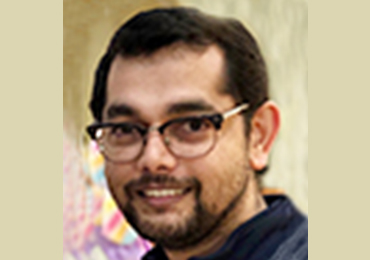
Vishal GOVIND RAO
Dr. Vishal Govind Rao is an Assistant Professor in Department of Chemistry at IIT Kanpur. His groupprobe/manipulate the interface dynamics of charge/energy transfer to improve the catalytic yield. They perform a controlled synthesis of novel high-performance plasmonic nanomaterials and investigate mechanistic details of catalytic reactions on functionalized metallic nanoparticle systems and use a multi-technique approach to correlate time-resolved fluorescence spectroscopy with electrochemistry, atomic force microscopy (AFM), and surface-enhanced Raman spectroscopy.
View Profile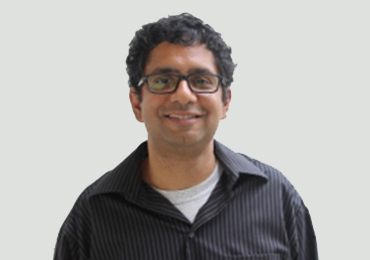
Akash GULYANI
Dr. Akash Gulyani is an Associate Professor in Department of Biochemistry at School of Life Sciences (University of Hyderabad). His group has developed novel biological sensors and probes for visualizing cellular dynamics such as localized protein activity, signaling, mitochondrial function and cell state transitions. They have intensively developed and explored BOTH natural and engineered light-based biological sensors to uncover new mechanisms and concepts.
View Profile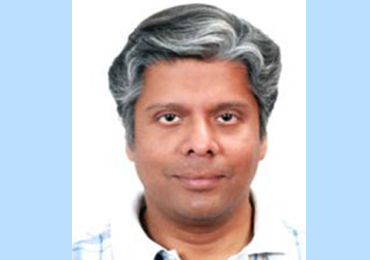
Purnananda GUPTASARMA
Dr. Purnananda Guptasarma is a Professor in the Department of Biological Sciences at IISER Mohali. His research work mainly focuses on protein structural biochemistry, and protein engineering. Currently, his group is mainly involved in ex-vivo studies of protein structure, stability, folding and function, or misfolding and aggregation, using many different experimental systems; and studies of DNA-protein interactions or gene expression, or cellular responses to protein aggregates.
View Profile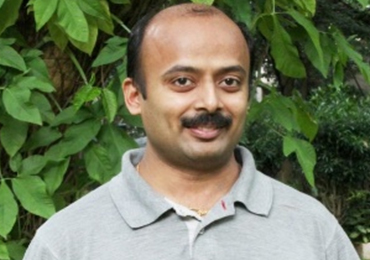
Balaji JAYAPRAKASH
Prof Balaji Jayaprakash is an Associate Professor in Centre for Neuroscience (CNS) at Indian Institute of Science, Bangalore. His research focusses on investigating the neural correlates of different forms of learning and memory. They try to understand the relationship between memories of recent and remote life time events and how they interact and influence each other. They use different techniques like optogenetics, CLARITY, Virtual Reality and in-vivo imaging along with several behavioural paradigms in mice to address these questions.
View Profile
Ajay JHA
Dr. Ajay Jha is an Associate Investigator at Rosalind Franklin Institute, Rutherford Appleton Laboratory, Didcot, UK. He uses the ultrafast spectroscopic methods to unravel mechanistic details of light induced post-translational installation of reactive protein side chains.His research group focus to combine novel technologies in adventurous ways to push atomic resolution, mechanistic understanding and control into cells, tissues, organs and organisms.
View Profile
Shobhna KAPOOR
Dr. Shobhna Kapoor is an Associate Professor in Chemistry at Indian Institute of Technology, Bombay.Her research group is primarily interested in the field of Molecular Biophysics and Chemical Biology with a particular empasis on lipids and lipid-induced signalling pathways.The usage of high-pressure perturbation methods is performed in order to investigate the structure and function of unusual lipids from bacterial origin.
View Profile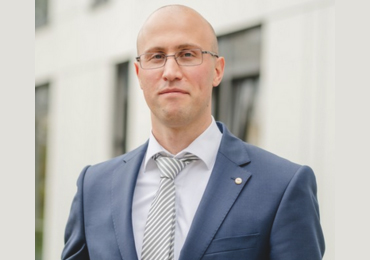
Sebastian KRUSS
Dr. Sebastian Kruss is a Professor of Physical Chemistry at Ruhr University Bochum and also a Head of Research Group at Fraunhofer IMS.His research group uses microscopy/spectroscopy to investigate nanomaterials and their soft interfaces. They have developed powerful biosensors and imaging tools for the investigation of complex chemical and biological systems.
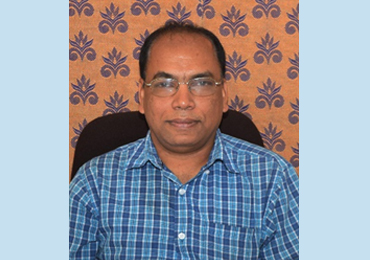
Nakul MAITY
Dr. Nakul Maity is a Senior Principal Scientist at Division of Structural Biology and Bioinformatics at CSIR-Indian Institute of Chemical Biology and Professor at AcSIRStructural Biology & Bioinformatics. His research area is mainly focussed onstructural intricacies of disease linked intrinsically disordered proteins (IDPs) such as amyloid beta (Aβ), α-synuclein. Application of biological Raman spectroscopy FTIR, NMR, AFM EM and fluorescence spectroscopy and molecular dynamics simulations to understand the aggregation and phase transition of protein solution.
View Profile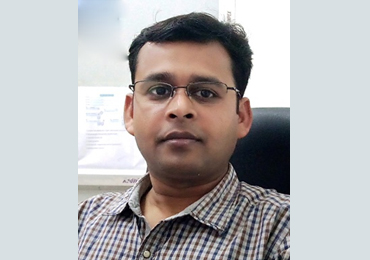
Padmaja Prasad MISHRA
Dr. Padmaja Prasad Mishra is an Associate Professor in Chemical Sciences Division at Saha Institute of Nuclear Physics. His group study interesting biophysical problems involving DNA, RNA and Proteins. To study these systems, they use various techniques such as Förster resonance energy transfer (FRET), Protein Induces Fluorescence Enhancement (PIFE), Fluorescence Correlation Spectroscopy (FCS), Circular Dichroism (CD), Time Correlated Single Photon Counting (TCSPC) and the conventional UV-vis and Fluorescence methods.
View Profile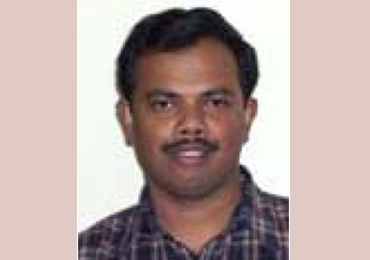
Sivaprasad MITRA
Dr. Sivaprasad Mitra is a Professor in Department of Chemistry at North-Eastern Hill University, Shillong. The research area of his group lies in probing ultrafast photo-processes and solvent response towards the formation of the transient species using transient absorption and fluorescence up-conversion techniques. Along with this they also perform ab-initio/DFT calculations, molecular docking and molecular dynamics (MD) simulation to support the experimental results.
View Profile
Samrat MUKHOPADHYAY
Dr. Samrat Mukhopadhyay is Professor in the Department of Biological and Chemical Sciences at IISER, Mohali. Their lab utilizes a diverse range of approaches involving biophysics, biochemistry, chemical biology, cell and molecular biology, and advanced single-molecule and ultrafast spectroscopy to gain molecular insights into the conformational ensemble and dynamics, the protein hydration water, liquid-liquid phase separation, aggregation and amyloid formation from various IDPs containing low-complexity and prion-like domains.
View Profile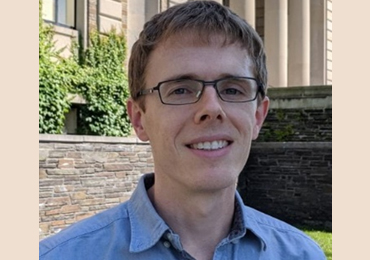
Andrew MUSSER
Dr. Andrew Musser is an Assistant Professor in the Department of Chemistry and Chemical Biology at Cornell University. They use a versatile toolbox of ultrafast optical spectroscopy techniques to track, understand and manipulate the functional properties of complex organic materials. Their research interest lies in studying light-matter interactions as well as optimizing material processing for high-efficiency light-emitting devices.
View Profile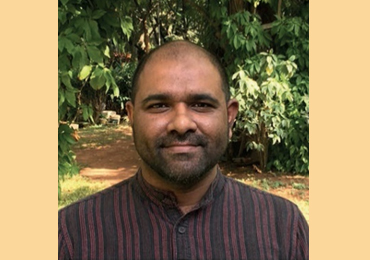
Deepak NAIR
Dr. Deepak Nair is an Associate Professor in Centre for Neuroscience at IISc Bangalore. The work in his lab attempt to dissect the fundamental role of dynamic nanoscale organization of synaptic molecules in how synapse process and relay information. To achieve this, they follow an interdisciplinary research paradigm at the interface of high end microscopy, molecular biology and cellular neuroscience.
View Profile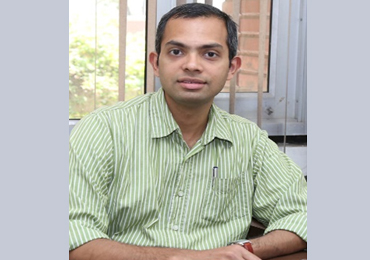
Prakash P NEELAKANDAN
Prakash P. Neelakandan is a Scientist 'F' at Institute of Nano Science and Technology, Mohali. His research group focuses on using synthetic organic chemistry to prepare new organic functional materials for applications in flexible electronic devices, sensors and cancer therapeutics.Highly sensitive chemosensors have been developed for biologically relevant thiols and fluoride anions.The organic single crystals used for molecular logic operations, flexible optical wave guiding and thermosalience.
View Profile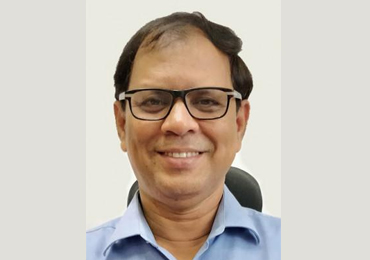
Dulal PANDA
Dr. Dulal Panda is Director in National Institute of Pharmaceutical Education and Research (NIPER), Mohali. His research group mainly focuses on Eukaryotic and prokaryotic cell division, microtubule dynamics, mitosis, cancer chemotherapy, FtsZ assembly dynamics, and FtsZ targeted antibacterial drugs and biomolecular spectroscopy.
View Profile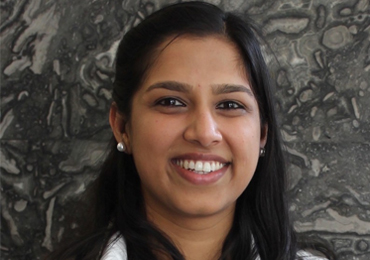
Nagma PARVEEN
Dr. NagmaParveen is an Assistant Professor in Chemistry at Indian Institute of Technology, Kanpur.Her research group focuses on biological nanoparticles, in particular, Viruses, Virus-like Particles and Lipid Vesicles.The different approaches are employed to functionalize the platforms for capturing of viruses as well as fluorescence microscopy and surface-sensitive analytical techniques for their detection.
View Profile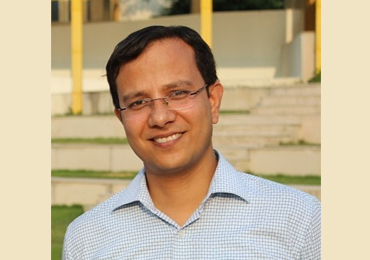
Abhijit PATRA
Dr. Abhijit Patra is an Associate Professor in the Department of Chemistry IISER Bhopal. His research interestsinclude the fabrication of porous organic materials (POPs, COFs, organic cages, and macrocycles), nanomaterials (organic/ inorganic/hybrids), and small organic luminogens, their self-assembly and applications in biology, catalysis, water purification, and energy storage.
View Profile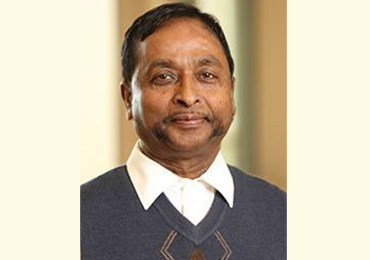
Ammasi PERIASAMY
Prof. Ammasi Periasamy is the Director and Founder of the WM Keck Center for Cellular Imaging. Currently, Dr. Periasamy works as a Professor of Biology and Biomedical Engineering at the university of Virgina, Charlottesville, USA. A key area of Dr. Periasamy’s research is focused on the design and development of optical methodologies to investigate/monitor exogenous and endogenous molecular interactions. His group has recently developed a FLIRR (Fluorescence Lifetime Redox Ratio) to investigate metabolism and mitochondrial dysfunction in cancer cells, tissues, and animal model in Alzheimer disease (AD).
View Profile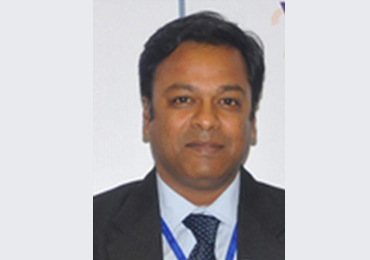
Pradipta PURKAYASTHA
Dr. Pradipta Purkayastha is a Professor in Department of Chemical Sciences in IISER Kolkata. His research interest lies in Photophysical characterization of new organic and inorganic molecules in microheterogeneous environments. His group is also involved in synthesis and application of metal nanoparticles and nanoclusters in drug delivery as well as Fluorescence Lifetime Imaging (FLIM) and Fluorescence Correlation Spectroscopy (FCS).
View Profile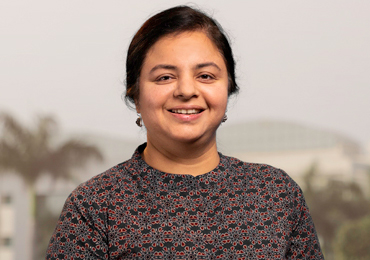
Richa RIKHY
Dr. Richa Rikhy is a Professor at Indian Institute of Science Education and Research, Pune. Her research group primarily focuses on the cellular organization, morphogenesis and differentiation during stem cell differentiation and embryogenesis. The various stem cell differentiation models and embryogenesis in Drosophila are employed as systems to address questions of onset of epithelial like plasma membrane and sub-cellular organization.
View Profile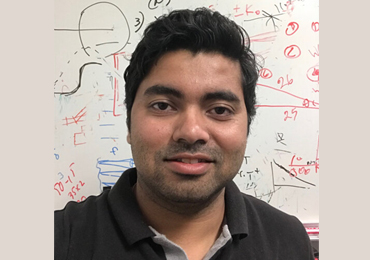
Palas ROY
Dr. Palas Roy is an assistant professor at IIT Bhubaneswar. His research works focus on Ultrafast Dynamics in Molecules and Materials Time-resolved Emission and Absorption Spectroscopy, Femtosecond Stimulated Raman Spectroscopy, Photodynamics of Next-generation Energy Materials, and Control and Harvest Charge Carriers Efficiently.
View Profile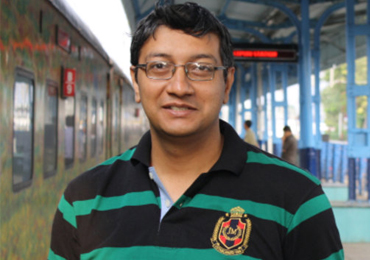
Basudev ROY
Basudev Roy is an Associate Professor in the Department of Physics at IIT Madras. His research primary emphasis on Optical Tweezers based study of statistical mechanics and biological systems. They probe the biological systems at the single molecule level by performing high resolution imaging. They couple the single biomolecules like kinesin motors and DNA to birefringent particles and apply controlled torques to study intrinsic properties of these molecules.
View Profile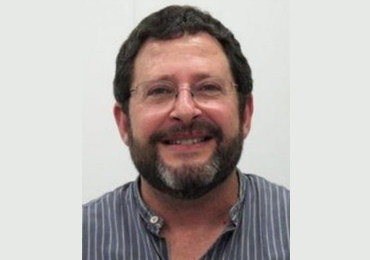
Sanford RUHMAN
Prof. Sanford Rahman is an Emeriti Professor in the Institute of Chemistry at The Hebrew University of Jerusalem. His research deals with applications of ultrafast spectroscopy to condensed phase photochemistry and photobiology. They construct State of the art femtosecond lasers to develop spectroscopic methods for following chemical dynamics in real time. They investigate small model systems to study photo-reactive systems of intrinsic functional importance, such as photosynthetic proteins or, more recently exciton dynamics in semiconductor nano-crystals and novel photovoltaic materials.
View Profile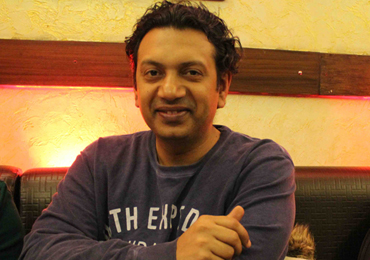
Sameer SAPRA
Sameer Sapra is a Professor in Department of Chemistry at Indian Institute of Technology Delhi. His research focuses on the synthesis and applications of nanocrystals: in particular semiconductor nanocrystals or quantum dots. The interest in nanocrystals stems from the fact that these tiny fragments of matter exhibit properties dependent on the size of the crystals. They concentrate mainly on the group II-VI chalcogenides, namely that of cadmium and zinc for the visible region of the electromagnetic spectrum, group IV-VI semiconductors such as PbS and PbSe for the infra-red region.
View Profile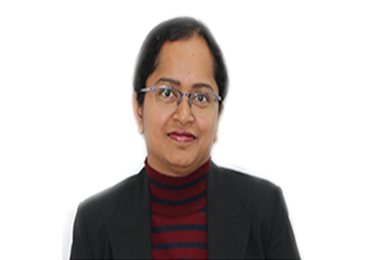
Ishu SARAOGI
Dr. Ishu Saraogi is an Associate Professor of Assistant Professor in Department of Biological Science at Indian Institute of Science Education and Research, Bhopal, India.Her research group is interested in the development of novel antibacterial compounds to combat drug-resistant bacteria. Using a combination of organic chemistry and molecular biology techniques, they focus mainly on Biophysical and biochemical assays for studying protein-protein and protein-ligand binding with a strong emphasis on fluorescence.
View Profile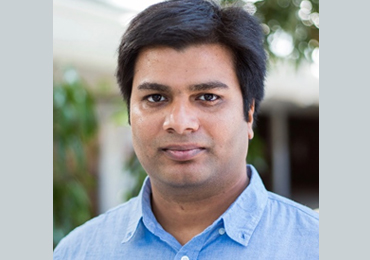
Dibyendu K SASMAL
Dr. Dibyendu K. Sasmal is an Associate Professor in Department of Chemistry at IIT Jodhpur. His research interest mainly lies in understanding complex sub-cellular functions and dynamics at single molecular level in real-time. They are specifically trying to understand how immune cells distinguish between self and foreign antigens at single molecule level in real time. For this, they apply various imaging techniques to capture ligand-receptor interaction dynamics on cell surface.
View Profile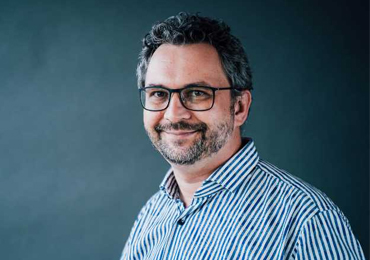
Michael SCHLIERF
Michael Schlierf is an Associate Professor for Molecular Biophysics at B CUBE, TU Dresden. His research mainly focuses on Conformational changes in biomolecules and enzymes.In order to study conformational changes within and between biomolecules, they develop and apply modern instruments and techniques based on fluorescence and force spectroscopy to understand how these nano-bio-machines change their structure during a given biological process. They are able to observe and analyse one molecule at a time to build a highly time and space-resolved picture of their dynamic interaction.
View Profile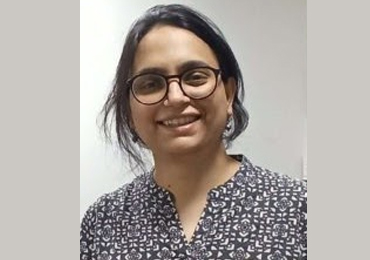
Bidisha SINHA
Dr. Bidisha Sinha is an Associate Professor in theDepartment of Biological Sciences at IISER Kolkata. Her research group focuses on how membrane homeostasis is established in single adherent eukaryotic cells.The high-resolution imaging of cells along with substrate micro-patterning and controlled stretching is used for investigation.
View Profile
Sharmistha SINHA
Prof. Sharmistha Sinha is a Professor, Scientist-F, Dean Academics, Former Head CBU at Institute of Nano Science and Technology, Mohali. Her lab is actively engaged in understanding the biogenesis pathogenesis in the bacterial microcompartments (BMCs) associated with Salmonella enterica. BMCs are models to explore compartmentalization in biology and organelle biogenesis in Salmonella BMCs as targets to manage Salmonella BMCs as scaffolds for the development of smart nano-factories and nanomaterials.
View Profile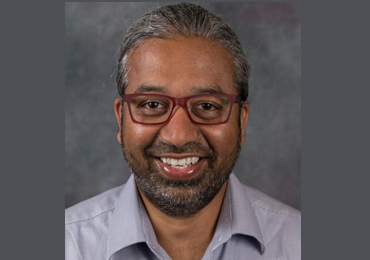
Sanjeevi SIVASANKAR
Dr. Sanjeevi Sivasankar is a Professor in the Department of Biomedical Engineering at the University of California, Davis. The research in his group focuses on understanding how cells tune their adhesion and how this process goes awry in cancer. The development of bioengineering tools and biophysical investigations of mechanical tension sensing in cells are two main areas of study. He aims to resolve the physical principles by which cells sense and respond to mechanical stimuli.
View Profile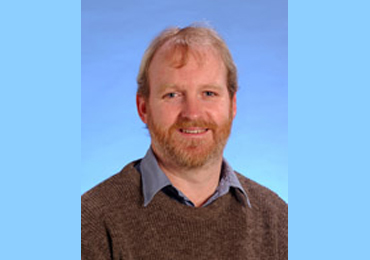
Trevor SMITH
Prof. Trevor Smith is a spectroscopist in the School of Chemistry at the University of Melbourne, Australia as well as a leader of the Ultrafast and Micro spectroscopy Laboratories.His primary interests are the development of super-resolution optical imaging methods and the use of ultrafast laser spectroscopy and time-resolved microscopy to study fast chemical processes, including energy transfer, electron transfer and excitons in polymers, nanocrystals and other materials.
View Profile
Peter TOROK
Dr. Peter Torok is a professor having joint appointments with the Division of Physics and Applied Physics, School of Physical and Mathematical Sciences, Lee Kong Chian School of Medicine and the Singapore Centre for Environmental Life Sciences Engineering (SCLESE), where he is Director of Imaging.Peter has a rich experience in developing sophisticated optical systems. His research interests cover the entire range of conventional optics, including optical design, electromagnetic imaging theory, polarisation, confocal microscopy, compressive/single pixel imaging, Brillouin and Raman spectroscopy and microscopy, reconfigurable optics and various applications in metrology.
View Profile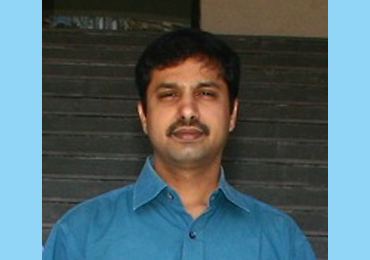
Sugumar VENKATARAMANI
Dr. Sugumar Venkataramani is an Associate Professor in Department of Chemical Sciences at IISER Mohali. His research group utilize the concepts of physical organic and synthetic organic chemistry towards design, development and studies on reactive species, and photoswitchable (functional) molecules and materials. They try to understand about the structure, stability and reactivity of radicals and highly reactive species. A detailed infrared/UV spectroscopic investigation will be performed along with computational studies in order to understand the structural information and mechanistic pathways.
View Profile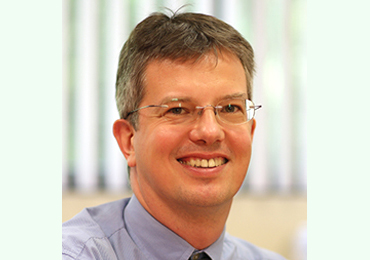
Thorsten WOHLAND
Dr. Thorsten Wohland is a Professor in Department of Biological Sciences at National University of Singapore, Singapore.His research group focuses on biophysics, specifically biophysical fluorescence. Currently, their interest is either on the investigation of transmembrane proteins (G-protein coupled receptors, growth factors) as well as their structure, function, and interactions, or antimicrobial peptides and their interaction with bacterial membranes.
View Profile